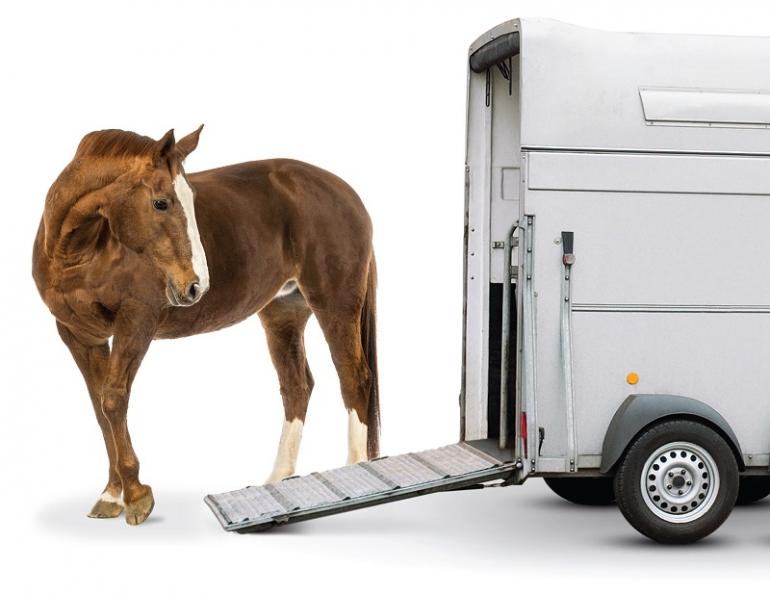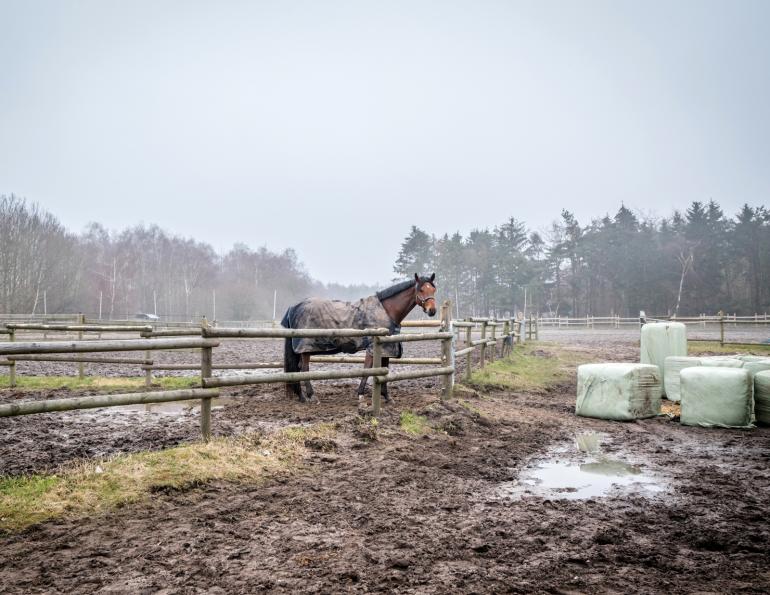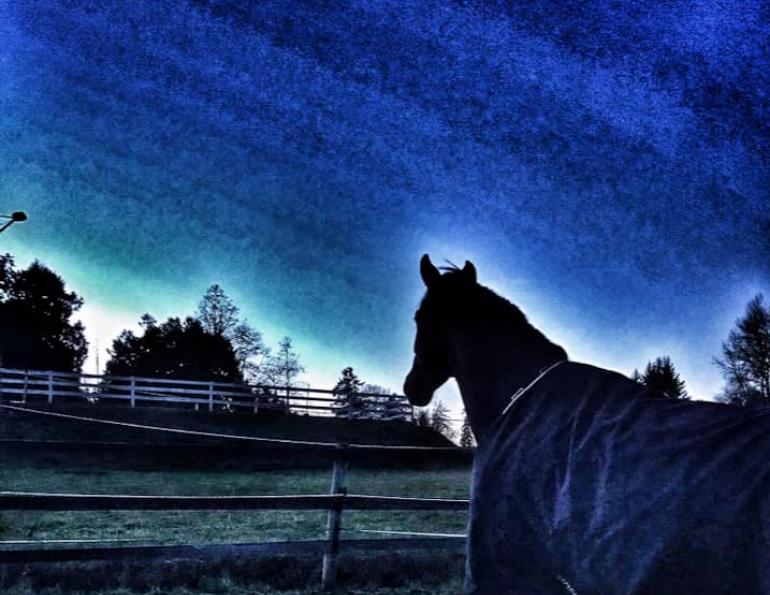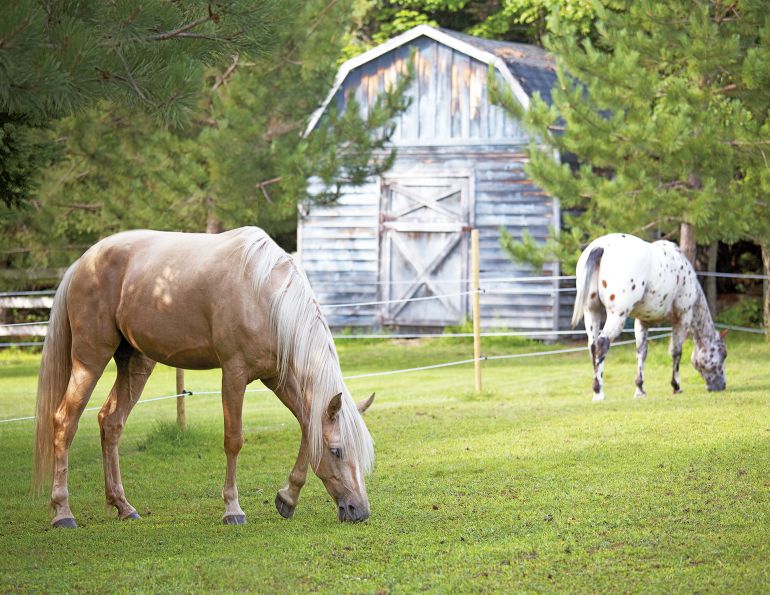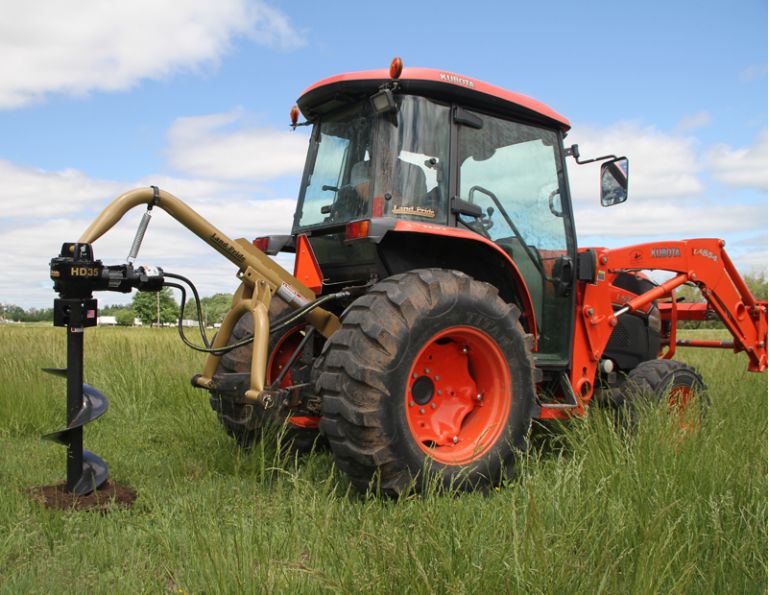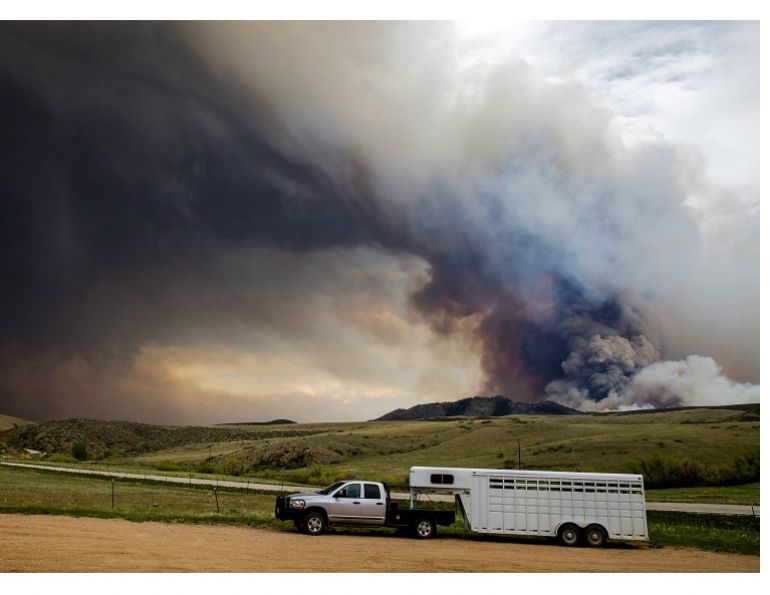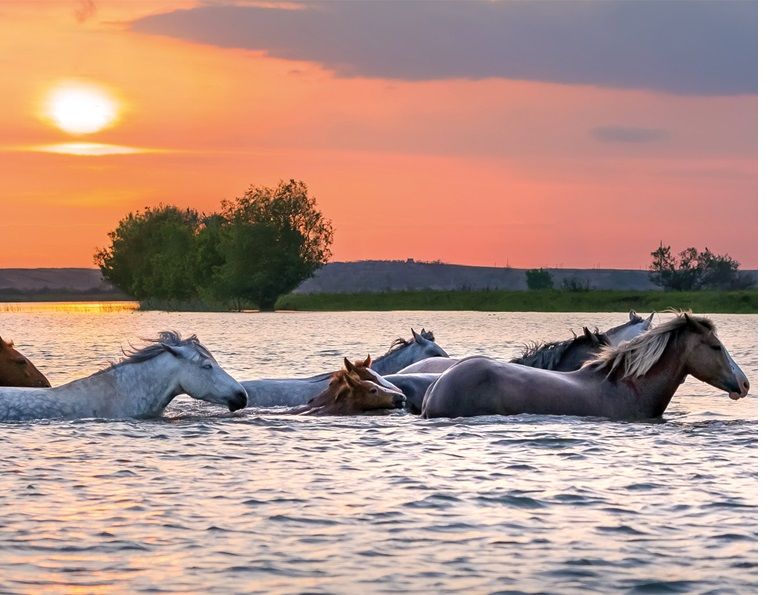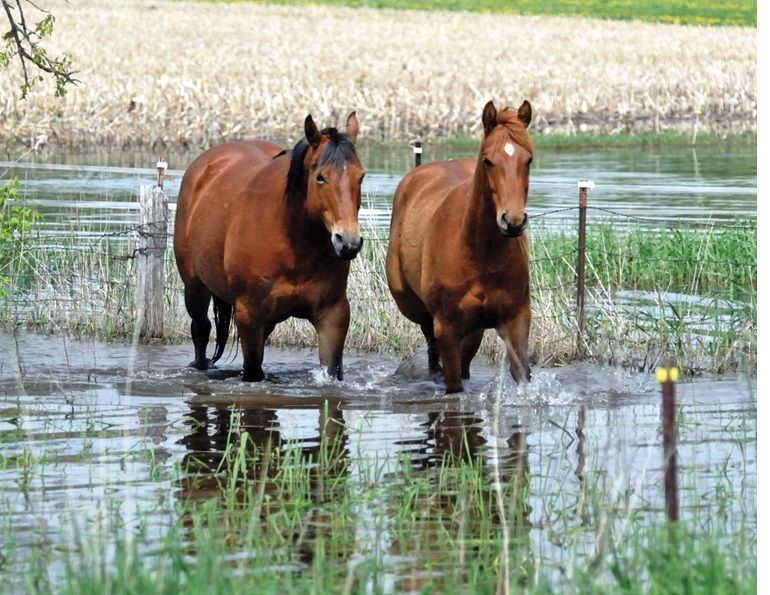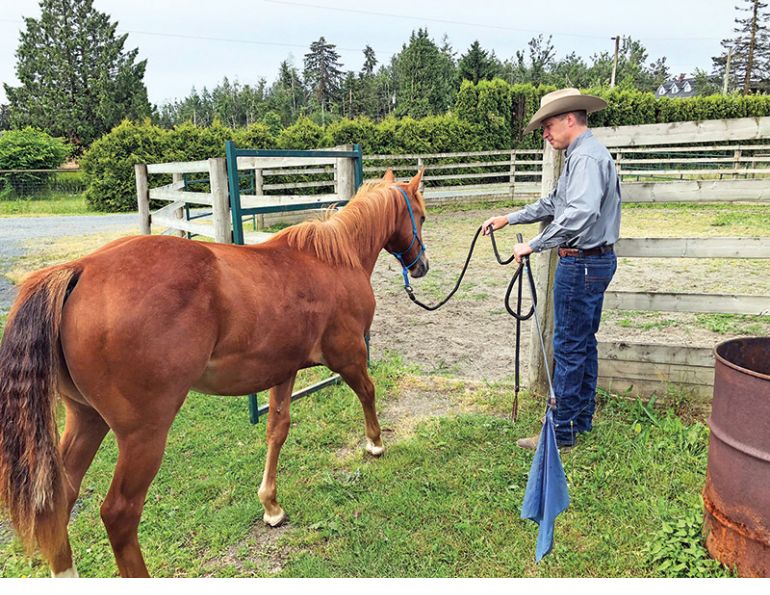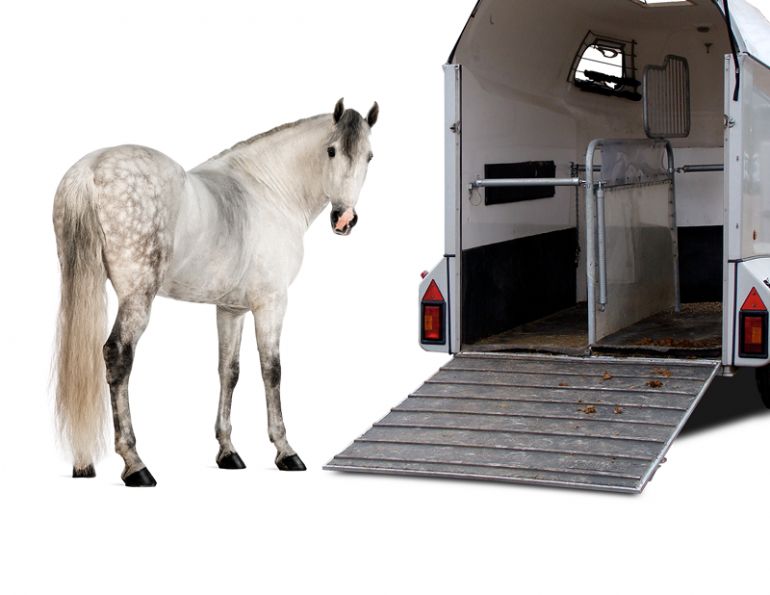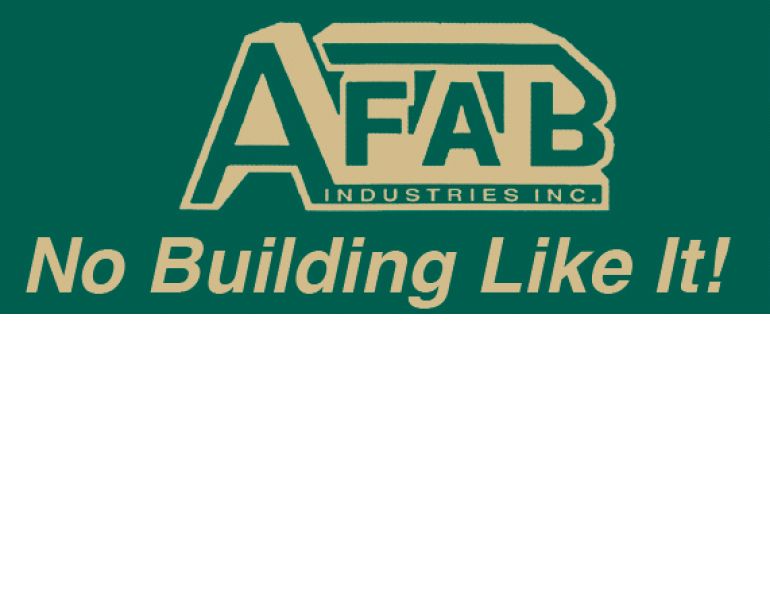From The Horse’s Perspective
By Kevan Garecki
Until recently, no major studies had been conducted about the effect of travel on horses. The best advice most folks could hope for was to glean some pearls of wisdom from the ocean of opinions and tales of other road warriors. As a result, I actually found the results of the recent study by the University of California, Davis Campus, noteworthy in that their observations essentially did not differ from what responsible commercial horse transporters have known for years. In other words, they put down in writing what we already practice. The best part about their study is that it confirmed what we already know and made it knowledge public.
So here’s how the road looks and sounds through the eyes and ears of a horse…
Noise-Related Stress
Most of us have witnessed the remarkably sensitive hearing that horses possess, but even when we’ve seen them catch the sound of footsteps from a mile away, full awareness escapes us. With hearing sensitive enough to hear that distant footfall, doesn’t it make sense that entering a trailer echoing with noises might be a tad unnerving? Rattling dividers, squeaking floors and joints, wind rushing in through open windows, passing traffic, and a myriad of other sounds inundate our horses every second they’re on board. The trend of many trailer manufacturers in recent years has thankfully taken this into consideration. Within the past ten years or so, makers have incorporated alternative fastening materials and have learned from mishaps in an effort to provide us with a safer and less stressful environment for our horses and a more appealing product.
However, no matter how well-designed and manufactured a trailer is, it will eventually experience wear, and when things wear out, they often get a little noisier. Formerly quiet trailers develop squeaks, rattles, and other signs of age. Part of my regular maintenance routine involves a “shakedown” of all moving parts, doors, hatches, ramps, and so forth. I will test dividers, give doors and hatches a vigorous shake, and test everything that moves, could move, and a few that shouldn’t move but might. I’ve also asked a friend to drive my rig across a bumpy parking lot while I ride inside just to see what the horses experience.
Noise is a primary stressor for horses, as it is for most prey animals. Stress increases fatigue, reduces the effectiveness of their immune system, and long-term exposure to stressful situations can cause permanent psychological and physiological damage. So by managing the noise levels in our trailers we can effectively reduce the degree and amount of stress our horses experience during transport.
Trailer Interiors
Lighting is seldom a concern until we stub a toe or scrape a shin on something in the dark. Some studies have shown that horses seem to have greater visual acuity than humans, but there are also indications that their eyes may take a bit longer to adjust to changing light conditions. We all know that sudden flashes of light can easily spook horses, as can dark shadows.
Keeping this in mind, it makes sense to maintain a constant level of light inside our trailers. Commercial transporters know this, and so provide artificial lighting inside their rigs, especially at night when streetlights and headlights from other traffic can turn the inside of a dark trailer into a chamber of horrors. Interior lighting helps immensely when loading at night. Horses naturally gravitate toward sources of light, so loading from a dark yard into a brightly lit trailer is actually rather inviting to Dobbin. I’ve used this trick to work with hesitant loaders in the past and have had very positive results.
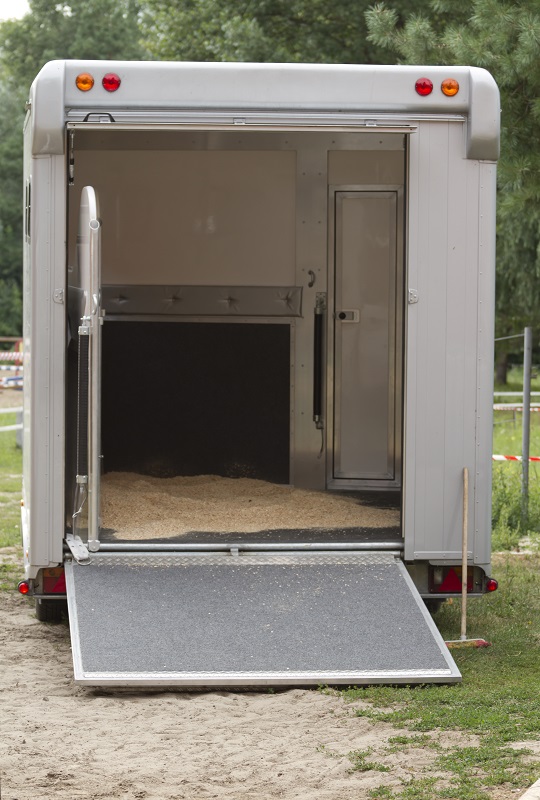
White ceilings and brightly coloured walls on the inside of the trailer give an improved sense of security. The lower walls are lined to absorb impact and sound. With rubber matting and bedding on the floor, this trailer is ready for loading. Photo: Shutterstock/Oleg Vinnichenko
The interior of the trailer itself can lend to or detract from its ambiance. The inside should be bright and lightly coloured. White ceilings and upper walls have a tremendous impact on the sense of security felt by horses in transit. Lower walls should be lined to absorb or at least deflect impacts from hooves while helping to deaden the sound of those blows and scrapes. Rubber matting is by far the most common material; it’s relatively cheap, easy to handle and work with, and has reasonable longevity. I’ve also used puckboard, which is the same stuff they line the inside of ice arenas with; it is very light, very tough, difficult to cut and fit, lives almost forever, but can splinter in very cold temperatures. And I’ve used hardwood tongue-and-groove planking, the cheapest of all the options, tough enough to handle all but the most violent kicks, but extremely heavy.
Horses moved in standing stalls experience higher degrees of transport stress than those moved in box stalls. Horses need enough room to move so they can posture for balance and for urinating. Horses moved in box stalls will frequently find their most comfortable place to be and stay there. Box stalls also reduce stress associated with confinement and allow the horse to move around more, thus reducing the possibility of stocking up.
Shipping Fever (pleuropneumonia)
Shipping fever seems to be one of the least understood ailments associated with transport, so I will attempt to clear up some myths. The term “shipping fever” is a misnomer; the condition is not a fever per se, but a reaction to circumstances commonly experienced by horses during travel. When horses are in the grazing position with head low to the ground, their respiratory system works remarkably well at defending their lungs against inhaled pathogens and bacteria. Much of the foreign matter inhaled is expelled via muscular activity and generation of mucus, which is subsequently expelled normally. When a horse’s head is tied this system is interrupted, causing some of the invading particles to become trapped in the lungs. If the restraint is too short, causing the horse to hold his head above the withers for an extended period of time, the ingestion of bacteria can rise to the point where the body can no longer get rid of it. Infection sets in and the horse succumbs to pleuropneumonia, or shipping fever. Other aspects of travel can exacerbate this process – dust from bedding, mould from hay, and road dust from open windows can all combine to effectively overwhelm the horse’s built-in cleansing processes.
Shipping fever typically manifests in lethargy, loss of appetite, and respiratory discharge, and if untreated can lead to pneumonia. As with most infections, there is usually an elevated body temperature, hence the term “fever.” The stress of travel can also compromise the horse’s immune system to the point that he becomes more susceptible to disease and infection.
The most effective way to prevent shipping fever is to simply ensure that the horse can lower his head below the withers, thereby allowing his respiratory system to function correctly. Either make the head restraint long enough to let the horse get his head down, or even better, don’t tie at all.
Related: Horsemanship: Solving Trailer Problems - Part 1
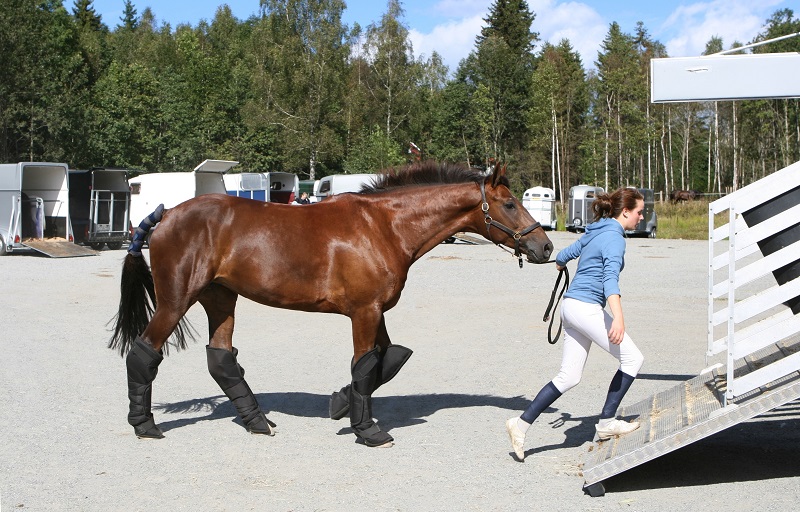
Ramps reduce the stress on tendons and joints during loading and unloading. Photo: iStock/Romaoslo

Munching on hay helps horses pass the time, but grain should not be fed prior to or during a long trip. Photo: Canstock/Egonzitter
Hauling from the Horses’ Perspective
Most standard angle-haul trailers are at least 6-feet wide by 7-feet high inside, and will offer a stall length of about 9-feet. This configuration will comfortably accommodate horses up to 16 hands. If your horse is in the 17-plus hand range, opt for a bit more headroom by going for at least 7.5-feet of inside height. The most common trailer manufacturer approaches to providing extra stall length are either to make the trailer wider, or to change the angle of the stalls in order to give the horses more room.
If your horse is in the 18-hand bracket, I’d be looking at trailers with no less than 7-feet 10-inches of headroom, and a minimum body width of 7.5-feet. These dimensions not only provide the horses with enough room to shift their weight to balance, but also let them move forward enough to posture in case they have to relieve themselves. Most horses will not urinate unless they can stretch their hind legs out a bit, so if they can’t do this, they are more likely to hold it, which can be uncomfortable at best, but can also lead to serious health implications.
For the draft crowd, whose horses can easily reach 19-hands and weigh a ton or more, don’t bother looking at anything with less than eight feet of clearance from floor to ceiling. Our heavy-horsey friends also need stall lengths of ten feet or more, which usually means a straight-haul trailer designed with open headroom in front of each stall. The increased weight means your trailer must be equipped with heavier axles and tires rated for more weight per square inch. A good rule of thumb is to look at bolt patterns; if you’re looking at a four-horse trailer those wheels better have an eight-bolt pattern or you’re walking away. Check the manufacturer’s weight rating very carefully. Take a moment to do the math.
Related: Questions to Ask A Commercial Horse Transporter

Draft horse stalls should have a minimum of eight feet floor-to-ceiling clearance, and a stall length of ten feet or more. The trailer itself must be built to carry the additional weight. Photo: iStock/Damnura

In the stall, there should be enough room for the horse to shift weight from side to side; three to six inches on either side of the horse is sufficient. Photo: Shutterstock/Tanhu
These figures are general, and may not be applicable in all cases. One of my regular clients has a 17-hand Thoroughbred for whom I must move my dividers to where they would normally accommodate an 18-hand horse. This fellow needs the extra length because of his long back, and he also likes to travel with his head down low to the floor. So it’s not always size that will dictate how big a trailer must be, it’s comfort and safety as well. Sure, you can make that coast-to-coast trip in a sub-compact, but wouldn’t you rather do it in a full-sized car?
I meet lots of folks who expound on how well their 17.3-hand warmblood loads into their Quarter Horse-sized wagon. I just nod politely and make a point of asking how comfortable they would be on a long trip with no leg or headroom. Most of them pooh-pooh that idea and merrily go back to shoving that big horse into that little trailer. I’ve often thought about asking some of them if they’d try to do the same thing when fitting a saddle. Truth is, a lot of horses are so good-natured they will squeeze themselves into almost any space we ask them to. A comfortable horse is one who is less likely to develop anti-trailering issues later on.
Trailer size becomes more important as we increase the number of horses hauled at any one time. It’s one thing to have a horse crammed into a tiny space, but when you get three or four horses with insufficient room, you have a recipe for disaster. It’s just a matter of time before one of them decides he’s had enough and rebels; and when that happens, it’s not too long before the rest of the herd joins in. I’ve never seen a stampede inside a horse trailer, and I’m not sure I’d ever want to.
There’s a lot of debate about stall width in trailers. As with pretty much everything else about our equine buddies, it all depends on the horse. Very few horses actually like to lean against a wall or divider, in fact many almost panic if anything touches them at all. You should assess your horses’ needs in this area, and choose accordingly. As a rule, I like to aim for a stall that will give a horse enough room to comfortably shift weight from side to side, but not so much that he runs the risk of turning around or falling in between walls and dividers. In most cases, three to six inches on either side of the horse is plenty for a standing stall. I opt for box stalls whenever possible, as the additional room makes for a much easier trip for the horse.
A disturbing trend that obviously fails to take the horse’s comfort into mind is the manufacture of angle-haul trailers with mangers at the head position. This offers us more room to stow gear, but prevents the horse from lowering his head in transit, inviting shipping fever.
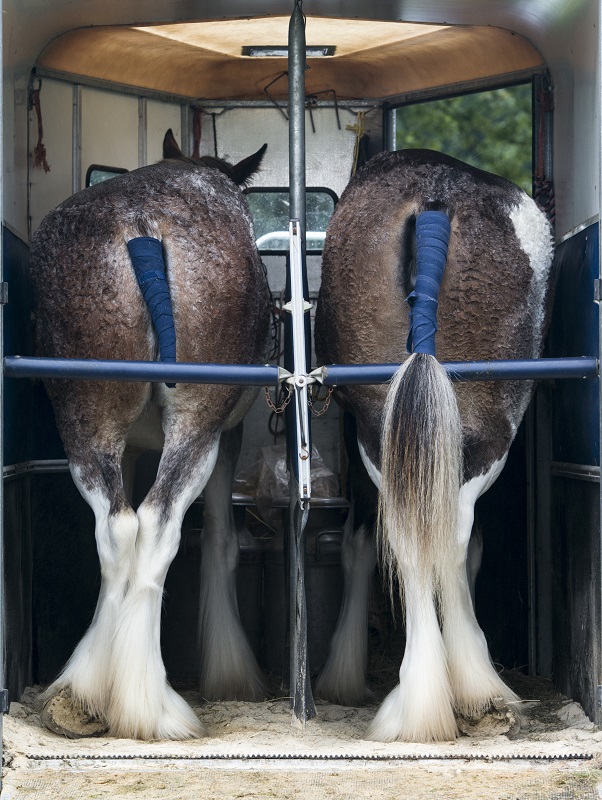
Two relaxed Clydesdales hanging out in their trailer at a horse show in Perthshire, Scotland. Photo: Shutterstock/K.Appleyard
Here are some common debates, and my views on them:
- Angle-Haul vs Straight-Haul – Angle-haul trailers were made for people, not for horses. The design permits more horses to be put into a smaller space than conventional straight-haul designs. Let me answer this debate as follows: If angle-haul trailers are so good, professional carriers would use them exclusively. Why don’t we? Simply put, horses standing at an angle to the direction of travel are less secure (contrary to what the makers would have us believe), are put at higher risk for post-trip complications (particularly over longer distances), and lack the headroom that gives a measure of security to claustrophobic travelers. Studies done by UC Davis and other institutions have proven this so effectively we need not address it here.
- Step-up vs Ramp – Ramps can reduce the stress on tendons and joints often associated with loading and unloading incidents. While step-ups are easier for us to manage and most horses can certainly manage the hop needed to enter them, I have witnessed far more injuries resulting from negotiating a step-up than those encountered on ramps.
- Feed/Hay – I keep hay bags full while on the road. Munching gives horses something to do, lowers stress, and reduces the chance of post-trip colic. If you’re concerned about airborne dust, wet the hay slightly. Never give grain prior to or during a long trip; the stress of transport can slow or even halt gut motility, leaving grain to ferment in the hindgut which can result in colic.
- Bedding – Bedding is essential for the horse’s comfort and safety while in transit. It makes for better footing, reduces road noise and vibration, soaks up urine, and allows for easier cleanup after the trip. As with hay, if you’re worried about dust, water the bedding down slightly just before loading. Adequate bedding is required by law in every jurisdiction in North America.
- Tying - I haul loose whenever possible. I may tie horses while loading or unloading others, but once we’re underway I remove head ties to allow the horses to lower their heads enough to breathe properly, which markedly reduces the incidence of shipping fever. A horse will also use his head and neck to balance, so by allowing room to do so we also help to lessen the stress and fatigue experienced on the road. Exceptions to this might include stallions or aggressive horses, those who may use the extra freedom to bother a neighbour, or to prevent smaller horses from ducking under dividers. If you must tie, ensure the lead is long enough to allow as much movement as is safe, but not so long that the horse can get tangled up in the lead. Never restrain a sick or injured horse while in transit; they need the freedom not only to balance but often to alleviate pain or discomfort.
Related: How to Haul a Horse Safely
Main Photo: Canstock/Mariait



